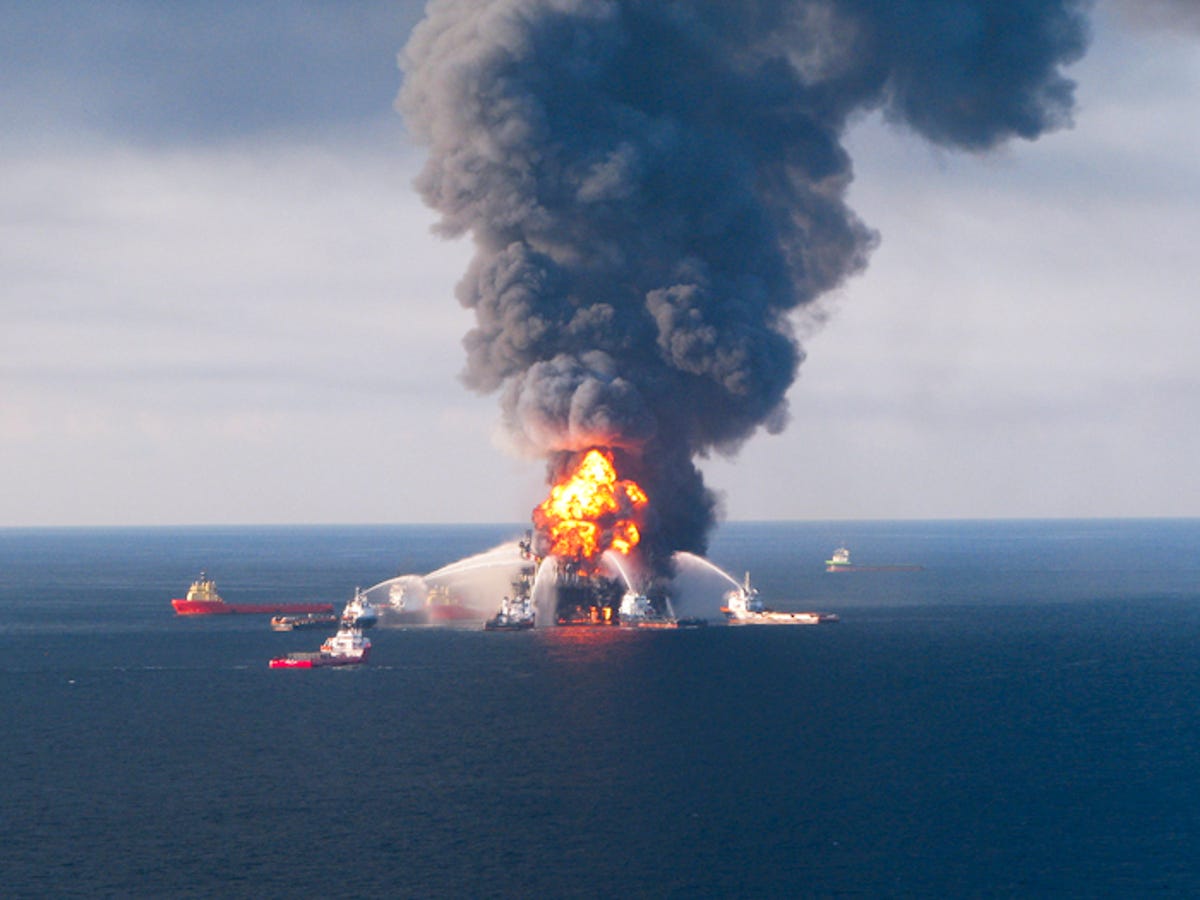In the Gulf, struggling with the oil disaster (photos)
BP and government agencies have been laboring for weeks to contain and clean up what the oil giant's CEO now calls an "environmental crisis and catastrophe." And it's far from over yet.

Deepwater Horizon fire
Since the explosion, BP and U.S. government agencies been struggling to contain and clean up the massive flow. Meanwhile, oil continues to gush. It has already devastated stretches of the Louisiana coast, threatening wildlife and livelihoods.
On Friday, BP CEO Tony Hayward acknowledged in an interview with CNN that the situation has become an "environmental crisis and catastrophe." Also on Friday, the company said that it is continuing with its "top kill" effort to try to stem the flow of oil, and Hayward said, "I think it's probably 48 hours before we'll have a conclusive view of this."
In this slideshow, CNET takes a look at efforts over the past five weeks to contain the disaster. In addition to the overall work to stop the flow itself, other efforts have included burning off oil, using chemical dispersants, and building booms and levees.
Oil spill
On Thursday, the U.S. Geological Survey estimated the well has spewed about 500,000 to 1 million gallons each day--greater than a previous estimate of 210,000 gallons a day.
If the estimates are accurate, even the most conservative figures would mean this disaster is worse than the 1989 Exxon Valdez spill in Alaska. The Valdez spilled 11 million gallons into Prince William Sound.
BP said Friday that it now estimates the total cost of the response to the Deepwater Horizon disaster at $930 million.
Cofferdam set on ship
Top hat deck loading
The unit was lowered onto the sea floor near the flow, and undersea robots positioned the cap over the flow. This effort failed too.
Top hat lowered into Gulf
Aerial view of burning oil
Dark clouds of smoke fill the sky as oil burns during a controlled fire in the Gulf of Mexico.
Jeff Cantrell
Drillship Discoverer Enterprise
Oil booms deployed
Here, Louisiana oil field diver Adam Shaw uses a hook to separate a more traditional oil boom that was to be used to trap oil for burning.
Boom protecting birds
According to the government's official response site, more than 3 million feet of booms had been deployed in the Gulf as of Thursday.
Packing stockings with hair
Here, in Fort Myers, Fla., volunteers stuff hair into nylon stockings to make oil-soaking containment booms.
Nylons, tights, thigh-highs, knee-highs
In Alabama too
Levees on Elmer's Island
The levees are designed to help prevent oil from from reaching sensitive wetland habitats.
Subsea dispersant injection system
This image from BP shows how the chemical dispersant Corexit is being used to deal with the oil before it reaches the surface.
Hundreds of thousands of gallons of dispersant have been applied to the spill so far--an amount far greater than ever before used in U.S. waters.
Earlier this week the Environmental Protection Agency asked BP to curtail its use of Corexit over concerns about its effects on marine life. BP and the EPA have been arguing over the use of the dispersant. The agency is looking into whether there are less toxic alternatives available in large enough quantities.
Chemical bearing tanks
Members of the 910th Airlift Wing are in Mississippi to assist with the response to the Deepwater Horizon oil spill. The 910th AW specializes in aerial spray and is the Department of Defense's only large area fixed-wing aerial spray unit.
Spraying dispersant
NOAA probe
Here, Nick Shay, professor of meteorology and physical oceanography at the University of Miami, and Bill Olney, a flight electronics technician, prepare to deploy an air-launched probe from a NOAA plane last week to study the Gulf of Mexico Loop Current and how best to prepare for the oil's movements.